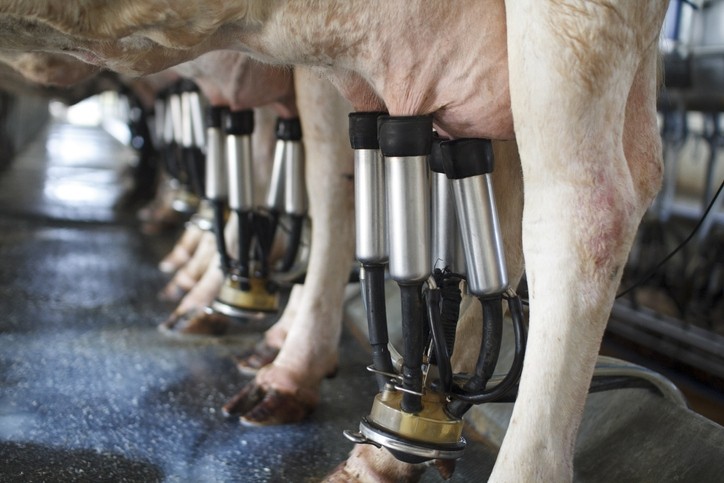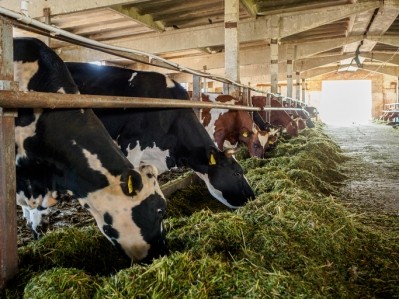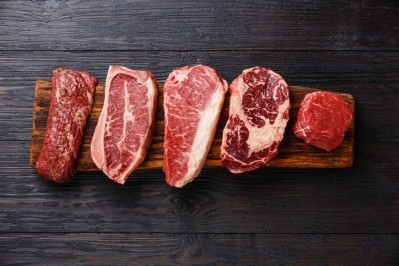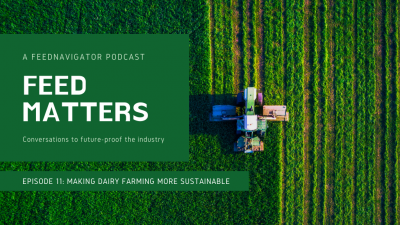Post-COVID-19: USDA sees sluggish EU dairy production for 2020

Germany, France, Italy, the UK, and Ireland, which are the EU’s major milk producers and processors, are among the most negatively affected by COVID-19 in Europe.
“Production growth will be moderated due to reduced dairy herd inventories and ongoing feed shortages following consecutive summer droughts in 2018 and 2019.”
The US Department of Agriculture (USDA), in a GAIN report, said it expects higher production in autumn 2020, assuming feed stocks return to normal following the summer and fall harvests.
The authors predict that dairy processors will increase non-fat dried milk (NFDM) and butter production in 2020 due to the longer shelf life of those products and their eligibility under the EC’s new Private Storage Aid (PSA) market intervention program.
Cheese production for 2020 will decline from 2019 levels, due to lower exports.
And the USDA forecasts that whole dry milk (WDM) production will plateau in 2020.
“Fluid milk production will decline, reflecting a general downward trend in fluid-milk consumption throughout the EU.”
Dairy cow inventories will continue to decline through 2020, following a general trend toward smaller herds and more productive animals, finds the report.
“Herd sizes are also smaller due to ongoing feed and forage shortages caused by consecutive summer droughts in 2018 and 2019. However, milk output will not be negatively affected, as better herd management, including high-quality genetics, has increased milk yields and can compensate for the reduction in the overall herd size.”
EU production outlook per market
In Germany, the EU’s largest dairy producer, the dairy industry is heavily dependent on exports, mainly to other EU member states, noted the report. The USDA forecasts that German exports of dairy products in 2020 will decline from last year’s levels because of the economic impact of COVID-19 and the subsequent lower demand.
“The actual effects of COVID-19 on the German dairy industry depends on how companies manage production and end-user profiles. Companies selling to the hotel, restaurant, and institutional sectors (HRI) and those reliant on exports will be hit the hardest, while those focused on consumer products or retail may even benefit from the ongoing COVID-19 crisis.”
France is the EU’s second-largest dairy producer. The publication estimates that French dairy exports, which typically represent 37% of total sales, will also decrease in 2020. Lower exports will be accompanied by a 25% sales reduction to the food processing industry and an 85% sales reduction to HRI.
“Domestic French dairy sales to the food processing industry and HRI sectors represent 16 and 5%, respectively, of total sales. These decreases will be partially offset by higher dairy sales to the retail sector, which usually accounts for 42% of total sales in France. France’s newly-lost export markets are driving lower demand and overproduction of dairy products.”
Most UK milk is sold under contract with producers either supplying the retail or hospitality sectors. The sudden closure of the hospitality sector in the UK was initially disruptive to the UK producers, for whom this was their primary market, with some milk going uncollected from farms. However, the sector responded quickly, and milk collections have now resumed.
“Some milk is being redirected into the retail sector due to increased home consumption of dairy products, albeit the mix of products required by consumers at home is slightly different to that consumed eating out or even purchased from retailers for out of home consumption.”
The USDA believes that, in the UK, there will be increased production of dairy products for commercial stocks and even some redirecting of the skim component of the milk to anaerobic digesters to help generate energy.
“Some price reductions are expected, with this forecast to lead to a slight year-on-year reduction in milk output in the UK, be that through reduced yield due to producers altering their feed mix balance or, possibly, the culling out their less efficient animals.”
In Ireland, there were no such disruptions to milk deliveries to dairies. Unlike the UK, Irish milk production is more cyclical due to the animals being mostly grass fed. Not only did the HRI closures come before the annual upswing in domestic production, the importance the domestic hospitality sector is less significant in Ireland, where there is a stronger focus on production and storage for export.
“Indeed, the processing sector has excess capacity and is well placed to handle disruptions at both ends of the supply chain. Concerns previously focused on Brexit have now turned to COVID-19 and the likelihood of reduced exports due to the closed hospitality sector in the UK and other traditional markets within the EU and beyond. Like in the UK, this is forecast to lead to negative price pressure. This may see some slowing of the ongoing expansion in the Irish dairy herd which, again like the UK, will not be fully felt until 2021.”
In the Netherlands, the herd size bounced back from 2019 with 38,000 additional cows added to the national herd of 1.6 million at the end of 2019. Dutch farmers are holding on to their cows, but generally, do not plan to expand their herds, reported the USDA.
The reduced demand for dairy products is forecast to have a limited effect on milk production, as farmers will continue to produce to cover their expenses and debts to banks, said the authors.
The USDA predicts that, due to the reduced demand for butter, cheese, and other high-value dairy products, Dutch processors will produce more longer shelf life products, mainly WDM, NFDM, and butter.
The Polish dairy sector continues to operate normally, finds the USDA team.
“Some dairy plants lowered raw milk prices paid to farmers, mostly because of higher seasonal spring milk production and the subsequent uptick in milk deliveries. Higher milk production may put additional downward price pressure on farm-gate milk prices in coming weeks, as dairy plants face lower demand from other EU markets and logistical problems.”














